Hydrogen Technology towards the Solution of Environment-Friendly New Energy Vehicles
Abstract
:1. Introduction
2. Methods: Change Management for a Successful Hydrogen Economy Transition
- As part of the renewable energy transition, the gradual reduction of fossil fuels needs to progress. As a response, the currently used ICE engine technologies powered by fossil resources need to be mitigated by the vehicle sector.
- Hydrogen generation, distribution, and utilisation have to be initiated and appropriate technology for each step is required. Moreover, for this change, the vehicle sector is forced to undertake major revisions within the propulsion systems.
- The final stage would comprise the consolidation of the transition. This would mean that the changes undertaken so far are stabilized and need to be incorporated into everyday life and used further.
3. Current Challenges Impeding a Successful Change to a Hydrogen Economy
3.1. Political and Ecological Challenges
3.2. Technological Challenges
3.3. Social Challenges
4. Concluding Remarks
Funding
Conflicts of Interest
References
- Chen, W.; Lei, Y.; Feng, K.; Wu, S.; Li, L. Provincial emission accounting for CO2 mitigation in China: Insights from production, consumption and income perspectives. Appl. Energy 2019, 255, 113754. [Google Scholar] [CrossRef]
- Wang, J.; Rodrigues, J.F.; Hu, M.; Behrens, P.; Tukker, A. The evolution of Chinese industrial CO2 emissions 2000–2050: A review and meta-analysis of historical drivers, projections and policy goals. Renew. Sustain. Energy Rev. 2019, 116, 109433. [Google Scholar] [CrossRef]
- Wang, Y.; Yang, H.; Liu, J.; Xu, Y.; Wang, X.; Ma, J.; Xu, J.; Yi, K.; Tao, S. Analysis of multiple drivers of air pollution emissions in China via interregional trade. J. Clean. Prod. 2020, 244, 118507. [Google Scholar] [CrossRef]
- Chang, X.; Ma, T.; Wu, R. Impact of urban development on residents’ public transportation travel energy consumption in China: An analysis of hydrogen fuel cell vehicles alternatives. Int. J. Hydrogen Energy 2019, 44, 16015–16027. [Google Scholar] [CrossRef]
- Chen, J.; Yuan, H.; Tian, X.; Zhang, Y.; Shi, F. What determines the diversity of CO2 emission patterns in the Beijing-Tianjin-Hebei region of China? An analysis focusing on industrial structure change. J. Clean. Prod. 2019, 228, 1088–1098. [Google Scholar] [CrossRef]
- Miao, L.; Gu, H.; Zhang, X.; Zhen, W.; Wang, M. Factors causing regional differences in China’s residential CO2 emissions—evidence from provincial data. J. Clean. Prod. 2019, 224, 852–863. [Google Scholar] [CrossRef]
- Wen, L.; Li, Z. Provincial-level industrial CO2 emission drivers and emission reduction strategies in China: Combining two-layer LMDI method with spectral clustering. Sci. Total Environ. 2020, 700, 134374. [Google Scholar] [CrossRef]
- Lin, X.; Zhang, Y.; Zou, C.; Peng, L. CO2 emission characteristics and reduction responsibility of industrial subsectors in China. Sci. Total Environ. 2020, 699, 134386. [Google Scholar] [CrossRef]
- Deng, J.; Zhao, W.; Wu, L.; Hu, W.; Ren, L.; Wang, X.; Fu, P. Black carbon in Xiamen, China: Temporal variations, transport pathways and impacts of synoptic circulation. Chemosphere 2020, 241, 125133. [Google Scholar] [CrossRef] [PubMed]
- Cui, D.; Deng, Z.; Liu, Z. China’s non-fossil fuel CO2 emissions from industrial processes. Appl. Energy 2019, 254. [Google Scholar] [CrossRef]
- Xu, G.; Schwarz, P.; Yang, H. Determining China’s CO2 emissions peak with a dynamic nonlinear artificial neural network approach and scenario analysis. Energy Policy 2019, 128, 752–762. [Google Scholar] [CrossRef]
- Cai, B.; Guo, H.; Cao, L.; Guan, D.; Bai, H. Local strategies for China’s carbon mitigation: An investigation of Chinese city-level CO2 emissions. J. Clean. Prod. 2018, 178, 890–902. [Google Scholar] [CrossRef] [Green Version]
- Sovacool, B.K. Reckless or righteous? Reviewing the sociotechnical benefits and risks of climate change geoengineering. Energy Strategy Rev. 2021, 35, 100656. [Google Scholar] [CrossRef]
- Li, Y.; Zhang, Y.; Zhao, X.; Tian, X. The influence of US and China’s CO2 transfer embodied in final consumption on Global emission. Energy Procedia 2018, 152, 835–840. [Google Scholar] [CrossRef]
- Internacional Energy Agency. Renewable Energy Market Update; Internacional Energy Agency: Paris, France, 2021. [Google Scholar]
- Zhao, L.; Primabudi, E.; Stolten, D. Investigation of a Hybrid System for Post-Combustion Capture. Energy Procedia 2014, 63, 1756–1772. [Google Scholar] [CrossRef] [Green Version]
- García-Freites, S.; Gough, C.; Röder, M. The greenhouse gas removal potential of bioenergy with carbon capture and storage (BECCS) to support the UK’s net-zero emission target. Biomass Bioenergy 2021, 151, 106164. [Google Scholar] [CrossRef]
- Osman, A.I.; Hefny, M.; Maksoud, M.I.A.A.; Elgarahy, A.M.; Rooney, D.W. Recent advances in carbon capture storage and utilisation technologies: A review. Environ. Chem. Lett. 2021, 19, 797–849. [Google Scholar] [CrossRef]
- Le Den, X.; Bruyère, S.; Dubois, G.; Garcia-Borreguerro, C.; Bary, A. Feasibility and Scoping Study for the Commission to Become Cli-Mate Neutral By 2030 Final Report Commission to Become Climate Neutral by 2030; European Commission: Brussels, Belgium, 2020. [Google Scholar]
- Osman, A.I.; Deka, T.J.; Baruah, D.C.; Rooney, D.W. Critical challenges in biohydrogen production processes from the organic feedstocks. Biomass Convers. Biorefinery 2020, 1–19. [Google Scholar] [CrossRef]
- Koj, J.C.; Wulf, C.; Zapp, P. Environmental impacts of power-to-X systems—A review of technological and methodological choices in Life Cycle Assessments. Renew. Sustain. Energy Rev. 2019, 112, 865–879. [Google Scholar] [CrossRef]
- Bailera, M.; Lisbona, P.; Peña, B.; Romeo, L.M. A review on CO2 mitigation in the Iron and Steel industry through Power to X processes. J. CO2 Util. 2021, 46, 101456. [Google Scholar] [CrossRef]
- Price, D.O.; Lewin, K.; Cartwright, D. Field Theory in Social Science: Selected Theoretical Papers; Harper & Brothers: New York, NY, USA, 1951; Volume 16. [Google Scholar]
- Willis, R. The role of national politicians in global climate governance. Environ. Plan. E Nat. Space 2019, 3, 885–903. [Google Scholar] [CrossRef] [Green Version]
- Ener, D.G. EU Hydrogen Strategy, Q2 Planning 2020 Roadmap. 2020. Available online: https://ec.europa.eu/info/law/better-regulation/have-your-say/initiatives/12407-A-EU-hydrogen-strategy (accessed on 20 June 2021).
- Gong, H.; Wang, M.Q.; Wang, H. New energy vehicles in China: Policies, demonstration, and progress. Mitig. Adapt. Strategy Glob. Chang. 2013, 18, 207–228. [Google Scholar] [CrossRef]
- Han, W.; Zhang, G.; Xiao, J.; Bénard, P.; Chahine, R. Demonstrations and marketing strategies of hydrogen fuel cell vehicles in China. Int. J. Hydrogen Energy 2014, 39, 13859–13872. [Google Scholar] [CrossRef]
- Zhongfu, T.; Chen, Z.; Pingkuo, L.; Reed, B.; Jiayao, Z. Focus on fuel cell systems in China. Renew. Sustain. Energy Rev. 2015, 47, 912–923. [Google Scholar] [CrossRef]
- Li, X.; Yu, B. Peaking CO2 emissions for China’s urban passenger transport sector. Energy Policy 2019, 133. [Google Scholar] [CrossRef]
- Han, F.; Guo, H.; Hu, J.; Zhang, J.; Ying, Q.; Zhang, H. Sources and health risks of ambient polycyclic aromatic hydrocarbons in China. Sci. Total Environ. 2020, 698, 134229. [Google Scholar] [CrossRef]
- Pollet, B.G.; Kocha, S.S.; Staffell, I. Current status of automotive fuel cells for sustainable transport. Curr. Opin. Electrochem. 2019, 16, 90–95. [Google Scholar] [CrossRef]
- Barrett, S.; Lucas, L. NEWS 2 Fuel Cells Bulletin. 2018. Available online: www.ruter.no/en (accessed on 27 June 2021).
- PowerCell-s-first-PS-5-fuel-cell-system-to-China_2017_Fuel-Cells-Bulletin. Available online: https://news.cision.com/powercell-sweden-ab/r/powercell-prepares-delivery-of-the-first-ps-5-fuel-cell-system-to-china,c2505593 (accessed on 28 June 2021).
- Zhou, M.; Long, P.; Kong, N.; Zhao, L.; Jia, F.; Campy, K.S. Characterizing the motivational mechanism behind taxi driver’s adoption of electric vehicles for living: Insights from China. Transp. Res. Part A Policy Pract. 2021, 144, 134–152. [Google Scholar] [CrossRef]
- Nanaki, E.A. Chapter 5—Climate change mitigation and electric vehicles. In Electric Vehicles for Smart Cities; Nanaki, E.A., Ed.; Elsevier: Amsterdam, The Netherlands, 2021; pp. 141–180. [Google Scholar]
- Arora, S.; Abkenar, A.T.; Jayasinghe, S.G.; Tammi, K. Chapter 6—Charging Technologies and Standards Applicable to Heavy-duty Electric Vehicles. In Heavy-Duty Electric Vehicles; Arora, S., Abkenar, A.T., Jayasinghe, S.G., Tammi, K., Eds.; Butterworth-Heinemann Press: Oxford, UK, 2021; pp. 135–155. [Google Scholar]
- Kittner, N.; Tsiropoulos, I.; Tarvydas, D.; Schmidt, O.; Staffell, I.; Kammen, D.M. Chapter 9—Electric vehicles. In Technological Learning in the Transition to a Low-Carbon Energy System; Junginger, M., Louwen, A., Eds.; Academic Press: Cambridge, MA, USA, 2020; pp. 145–163. [Google Scholar]
- Andwari, A.M.; Pesiridis, A.; Rajoo, S.; Martinez-Botas, R.; Esfahanian, V. A review of Battery Electric Vehicle technology and readiness levels. Renew. Sustain. Energy Rev. 2017, 78, 414–430. [Google Scholar] [CrossRef]
- Cabukoglu, E.; Georges, G.; Küng, L.; Pareschi, G.; Boulouchos, K. Battery electric propulsion: An option for heavy-duty vehicles? Results from a Swiss case-study. Transp. Res. Part C Emerg. Technol. 2018, 88, 107–123. [Google Scholar] [CrossRef]
- Manzetti, S.; Mariasiu, F. Electric vehicle battery technologies: From present state to future systems. Renew. Sustain. Energy Rev. 2015, 51, 1004–1012. [Google Scholar] [CrossRef]
- Wang, C.; Zhou, S.; Hong, X.; Qiu, T.; Wang, S. A comprehensive comparison of fuel options for fuel cell vehicles in China. Fuel Process. Technol. 2005, 86, 831–845. [Google Scholar] [CrossRef]
- Kast, J.; Morrison, G.; Gangloff, J.J.; Vijayagopal, R.; Marcinkoski, J. Designing hydrogen fuel cell electric trucks in a diverse medium and heavy duty market. Res. Transp. Econ. 2018, 70, 139–147. [Google Scholar] [CrossRef]
- Lee, D.-Y.; Elgowainy, A.; Kotz, A.; Vijayagopal, R.; Marcinkoski, J. Life-cycle implications of hydrogen fuel cell electric vehicle technology for medium- and heavy-duty trucks. J. Power Sources 2018, 393, 217–229. [Google Scholar] [CrossRef]
- Kast, J.; Vijayagopal, R.; Gangloff, J.J.; Marcinkoski, J. Clean commercial transportation: Medium and heavy duty fuel cell electric trucks. Int. J. Hydrogen Energy 2017, 42, 4508–4517. [Google Scholar] [CrossRef] [Green Version]
- Hernandez-Torres, D.; Sename, O.; Riu, D.; Druart, F. On the Robust Control of DC-DC Converters: Application to a Hybrid Power Generation System. IFAC Proc. Vol. 2010, 43, 123–130. [Google Scholar] [CrossRef] [Green Version]
- Zhang, Z.; Wang, D.; Zhang, C.; Chen, J. Electric vehicle range extension strategies based on improved AC system in cold climate—A review. Int. J. Refrig. 2018, 88, 141–150. [Google Scholar] [CrossRef]
- Fernández, R.Á.; Cilleruelo, F.B.; Martínez, I.V. A new approach to battery powered electric vehicles: A hydrogen fuel-cell-based range extender system. Int. J. Hydrogen Energy 2016, 41, 4808–4819. [Google Scholar] [CrossRef]
- Millo, F.; Caputo, S.; Piu, A. Analysis of a HT-PEMFC range extender for a light duty full electric vehicle (LD-FEV). Int. J. Hydrogen Energy 2016, 41, 16489–16498. [Google Scholar] [CrossRef]
- Peksen, M. Fuel Cell Range Extender—Tailored System Development from Concept to Public Road Use. In Proceedings of the 8. Aachen Colloquium China, Beijing, China, 14–15 November 2018; pp. 1–7. [Google Scholar]
- Sabri, M.M.; Danapalasingam, K.; Rahmat, M. A review on hybrid electric vehicles architecture and energy management strategies. Renew. Sustain. Energy Rev. 2016, 53, 1433–1442. [Google Scholar] [CrossRef]
- Pelletier, S.; Jabali, O.; Laporte, G.; Veneroni, M. Battery degradation and behaviour for electric vehicles: Review and numerical analyses of several models. Transp. Res. Part B Methodol. 2017, 103, 158–187. [Google Scholar] [CrossRef]
- IEA. Evolution of Li-ion Battery Price, 1995–2019; IEA: Paris, France, 2019; Available online: https://www.iea.org/data-and-statistics/charts/evolution-of-li-ion-battery-price-1995-2019 (accessed on 25 June 2021).
- Unterreiner, L.; Jülch, V.; Reith, S. Recycling of Battery Technologies-Ecological Impact Analysis Using Life Cycle Assessment (LCA). Energy Procedia 2016, 99, 229–234. [Google Scholar] [CrossRef] [Green Version]
- Liu, Z.; Song, Z. Robust planning of dynamic wireless charging infrastructure for battery electric buses. Transp. Res. Part C Emerg. Technol. 2017, 83, 77–103. [Google Scholar] [CrossRef]
- Kariya, T.; Tanaka, H.; Hirono, T.; Kuse, T.; Yanagimoto, K.; Uchiyama, K.; Henmi, M.; Hirose, M.; Kimura, I.; Suu, K.; et al. Development of a novel cell structure for low-temperature SOFC using porous stainless steel support combined with hydrogen permeable Pd layer and thin film proton conductor. J. Alloy. Compd. 2016, 654, 171–175. [Google Scholar] [CrossRef] [Green Version]
- Stolten, D. Hydrogen and Fuel Cells: Fundamentals, Technologies and Applications; John Wiley & Sons: Hoboken, NJ, USA, 2010. [Google Scholar]
- Din, Z.U.; Zainal, Z. Biomass integrated gasification–SOFC systems: Technology overview. Renew. Sustain. Energy Rev. 2016, 53, 1356–1376. [Google Scholar] [CrossRef]
- Stambouli, A.; Traversa, E. Solid oxide fuel cells (SOFCs): A review of an environmentally clean and efficient source of energy. Renew. Sustain. Energy Rev. 2002, 6, 433–455. [Google Scholar] [CrossRef]
- Peters, R.; Deja, R.; Engelbracht, M.; Frank, M.; Nguyen, V.N.; Blum, L.; Stolten, D. Efficiency analysis of a hydrogen-fueled solid oxide fuel cell system with anode off-gas recirculation. J. Power Sources 2016, 328, 105–113. [Google Scholar] [CrossRef]
- Blum, L.; Groß, S.M.; Malzbender, J.; Pabst, U.; Peksen, M.; Peters, R.; Vinke, I.C. Investigation of solid oxide fuel cell sealing behavior under stack relevant conditions at Forschungszentrum Jülich. J. Power Sources 2011, 196, 7175–7181. [Google Scholar] [CrossRef]
- Ramadhani, F.; Hussain, M.; Mokhlis, H.; Hajimolana, S. Optimization strategies for Solid Oxide Fuel Cell (SOFC) application: A literature survey. Renew. Sustain. Energy Rev. 2017, 76, 460–484. [Google Scholar] [CrossRef]
- Choudhury, A.; Chandra, H.; Arora, A. Application of solid oxide fuel cell technology for power generation—A review. Renew. Sustain. Energy Rev. 2013, 20, 430–442. [Google Scholar] [CrossRef]
- Peksen, M. 3D CFD/FEM analysis of thermomechanical long-term behaviour in SOFCs: Furnace operation with different fuel gases. Int. J. Hydrogen Energy 2015, 40, 12362–12369. [Google Scholar] [CrossRef]
- Peksen, M.; Al-Masri, A.; Blum, L.; Stolten, D. 3D transient thermomechanical behaviour of a full scale SOFC short stack. Int. J. Hydrogen Energy 2013, 38, 4099–4107. [Google Scholar] [CrossRef]
- Al-Masri, A.; Peksen, M.; Blum, L.; Stolten, D. A 3D CFD model for predicting the temperature distribution in a full scale APU SOFC short stack under transient operating conditions. Appl. Energy 2014, 135, 539–547. [Google Scholar] [CrossRef]
- Peksen, M.; Al-Masri, A.; Peters, R.; Blum, L.; Stolten, D. Recent Developments in 3D Multiphysics Modelling of Whole Fuel Cell Systems for Assisting Commercialisation and Improved Reliability. ECS Trans. 2017, 75, 15–22. [Google Scholar] [CrossRef]
- Mehta, V.; Cooper, J.S. Review and analysis of PEM fuel cell design and manufacturing. J. Power Sources 2003, 114, 32–53. [Google Scholar] [CrossRef]
- Alaswad, A.; Baroutaji, A.; Achour, H.; Carton, J.; Al Makky, A.; Olabi, A.G. Developments in fuel cell technologies in the transport sector. Int. J. Hydrogen Energy 2016, 41, 16499–16508. [Google Scholar] [CrossRef] [Green Version]
- Tawfik, H.; Hung, Y.; Mahajan, D. Metal bipolar plates for PEM fuel cell—A review. J. Power Sources 2007, 163, 755–767. [Google Scholar] [CrossRef]
- Menzler, N.H.; Blum, L.; Buchkremer, H.; Gro§, S.; De Haart, L.; Malzbender, J.; Mücke, R.; Quadakkers, W.J.; Peksen, M.; Peters, R.; et al. Status of Solid Oxide Fuel Cell Development at Forschungszentrum Jülich. Procedia Eng. 2012, 44, 407–408. [Google Scholar] [CrossRef] [Green Version]
- Peksen, M. 3D thermomechanical behaviour of solid oxide fuel cells operating in different envi-ronments. Int. J. Hydrogen Energy 2013, 38, 13408–13418. [Google Scholar] [CrossRef]
- Peksen, M. Safe heating-up of a full scale SOFC system using 3D multiphysics modelling optimisation. Int. J. Hydrogen Energy 2018, 43, 354–362. [Google Scholar] [CrossRef]
- Peksen, M. Numerical thermomechanical modelling of solid oxide fuel cells. Prog. Energy Combust. Sci. 2015, 48, 1–20. [Google Scholar] [CrossRef]
- Peksen, M.; Peters, R.; Blum, L.; Stolten, D. Hierarchical 3D multiphysics modelling in the de-sign and optimisation of SOFC system components. Int. J. Hydrogen Energy 2011, 36, 4400–4408. [Google Scholar] [CrossRef]
- Peksen, M. A coupled 3D thermofluid–thermomechanical analysis of a planar type production scale SOFC stack. Int. J. Hydrogen Energy 2011, 36, 11914–11928. [Google Scholar] [CrossRef]
- Peksen, M.; Peters, R.; Blum, L.; Stolten, D. Design and Optimisation of SOFC System Compo-nents using a Trio Approach: Measurements, Design of Experiments, and 3D Computational Fluid Dynamics. ECS Trans. 2009, 25, 1195–1200. [Google Scholar] [CrossRef]
- Jing, R.; Wang, M.; Brandon, N.; Zhao, Y. Multi-criteria evaluation of solid oxide fuel cell based combined cooling heating and power (SOFC-CCHP) applications for public buildings in China. Energy 2017, 141, 273–289. [Google Scholar] [CrossRef]
- Riensche, E.; Achenbach, E.; Froning, D.; Haines, M.; Heidug, W.; Lokurlu, A.; Von Andrian, S. Clean combined-cycle SOFC power plant—Cell modelling and process analysis. J. Power Sources 2000, 86, 404–410. [Google Scholar] [CrossRef]
- Farhad, S.; Hamdullahpur, F.; Yoo, Y. Performance evaluation of different configurations of biogas-fuelled SOFC micro-CHP systems for residential applications. Int. J. Hydrogen Energy 2010, 35, 3758–3768. [Google Scholar] [CrossRef] [Green Version]
- Ivers-Tiffée, E.; Weber, A.; Herbstritt, D. Materials and technologies for SOFC-components. J. Eur. Ceram. Soc. 2001, 21, 1805–1811. [Google Scholar] [CrossRef]
- Kendall, M. Fuel cell development for New Energy Vehicles (NEVs) and clean air in China. Prog. Nat. Sci. 2018, 28, 113–120. [Google Scholar] [CrossRef]
- Liu, F.; Zhao, F.; Liu, Z.; Hao, H. The impact of fuel cell vehicle deployment on road transport greenhouse gas emissions: The China case. Int. J. Hydrogen Energy 2018, 43, 22604–22621. [Google Scholar] [CrossRef]
- Shen, J.; Tu, Z.; Chan, S.H. Performance enhancement in a proton exchange membrane fuel cell with a novel 3D flow field. Appl. Therm. Eng. 2020, 164, 114464. [Google Scholar] [CrossRef]
- Ozden, A.; Shahgaldi, S.; Zhao, J.; Li, X.; Hamdullahpur, F. Degradations in porous components of a proton exchange membrane fuel cell under freeze-thaw cycles: Morphology and microstructure effects. Int. J. Hydrogen Energy 2020, 45, 3618–3631. [Google Scholar] [CrossRef]
- Huo, S.; Jiao, K.; Park, J.W. On the water transport behavior and phase transition mechanisms in cold start operation of PEM fuel cell. Appl. Energy 2019, 233–234, 776–788. [Google Scholar] [CrossRef]
- Luo, Y.; Jiao, K. Cold start of proton exchange membrane fuel cell. Prog. Energy Combust. Sci. 2018, 64, 29–61. [Google Scholar] [CrossRef]
- Wu, J.; Yuan, X.Z.; Martin, J.J.; Wang, H.; Zhang, J.; Shen, J.; Wu, S.; Merida, W. A review of PEM fuel cell durability: Degradation mechanisms and mitigation strategies. J. Power Sources 2008, 184, 104–119. [Google Scholar] [CrossRef]
- Dafalla, A.M.; Jiang, F. Stresses and their impacts on proton exchange membrane fuel cells: A review. Int. J. Hydrogen Energy 2018, 43, 2327–2348. [Google Scholar] [CrossRef]
- Steinberger, M.; Geiling, J.; Oechsner, R.; Frey, L. Anode recirculation and purge strategies for PEM fuel cell operation with diluted hydrogen feed gas. Appl. Energy 2018, 232, 572–582. [Google Scholar] [CrossRef]
- Martin, S.; Garcia-Ybarra, P.; Castillo, J. Long-term operation of a proton exchange membrane fuel cell without external humidification. Appl. Energy 2017, 205, 1012–1020. [Google Scholar] [CrossRef]
- Chang, Y.; Qin, Y.; Yin, Y.; Zhang, J.; Li, X. Humidification strategy for polymer electrolyte membrane fuel cells—A review. Appl. Energy 2018, 230, 643–662. [Google Scholar] [CrossRef]
- Geng, C.; Jin, X.; Zhang, X. Simulation research on a novel control strategy for fuel cell extended-range vehicles. Int. J. Hydrogen Energy 2019, 44, 408–420. [Google Scholar] [CrossRef]
- Vivas, F.J.; Heras, A.D.L.; Segura, F.; Andújar, J.M. Cell voltage monitoring All-in-One. A new low cost solution to perform degradation analysis on air-cooled polymer electrolyte fuel cells. Int. J. Hydrogen Energy 2019, 44, 12842–12856. [Google Scholar] [CrossRef]
- Ratnakar, R.R.; Gupta, N.; Zhang, K.; van Doorne, C.; Fesmire, J.; Dindoruk, B.; Balakotaiah, V. Hydrogen supply chain and challenges in large-scale LH2 storage and transportation. Int. J. Hydrogen Energy 2021, 46, 24149–24168. [Google Scholar] [CrossRef]
- Meng, X.; Gu, A.; Wu, X.; Zhou, L.; Zhou, J.; Liu, B.; Mao, Z. Status quo of China hydrogen strategy in the field of transportation and international comparisons. Int. J. Hydrogen Energy 2020. [Google Scholar] [CrossRef]
- Dawood, F.; Anda, M.; Shafiullah, G. Hydrogen production for energy: An overview. Int. J. Hydrogen Energy 2020, 45, 3847–3869. [Google Scholar] [CrossRef]
- Baykara, S.Z. Hydrogen: A brief overview on its sources, production and environmental impact. Int. J. Hydrogen Energy 2018, 43, 10605–10614. [Google Scholar] [CrossRef]
- Kumar, R.; Kumar, A.; Pal, A. An overview of conventional and non-conventional hydrogen production methods. Mater. Today Proc. 2020. [Google Scholar] [CrossRef]
- Abohamzeh, E.; Salehi, F.; Sheikholeslami, M.; Abbassi, R.; Khan, F. Review of hydrogen safety during storage, transmission, and applications processes. J. Loss Prev. Process. Ind. 2021, 72, 104569. [Google Scholar] [CrossRef]
- Li, W.; Long, R.; Chen, H.; Geng, J. A review of factors influencing consumer intentions to adopt battery electric vehicles. Renew. Sustain. Energy Rev. 2017, 78, 318–328. [Google Scholar] [CrossRef]
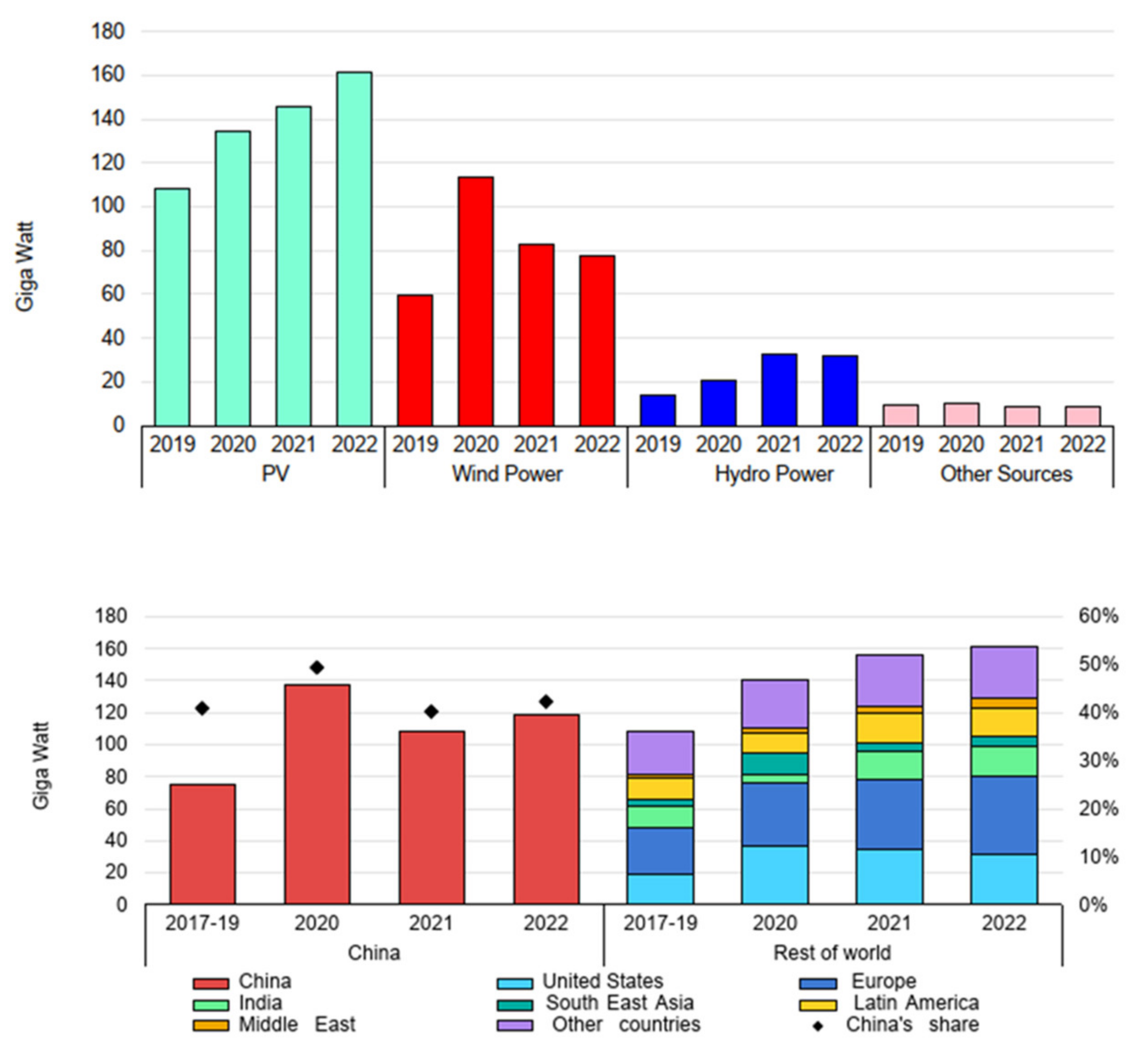
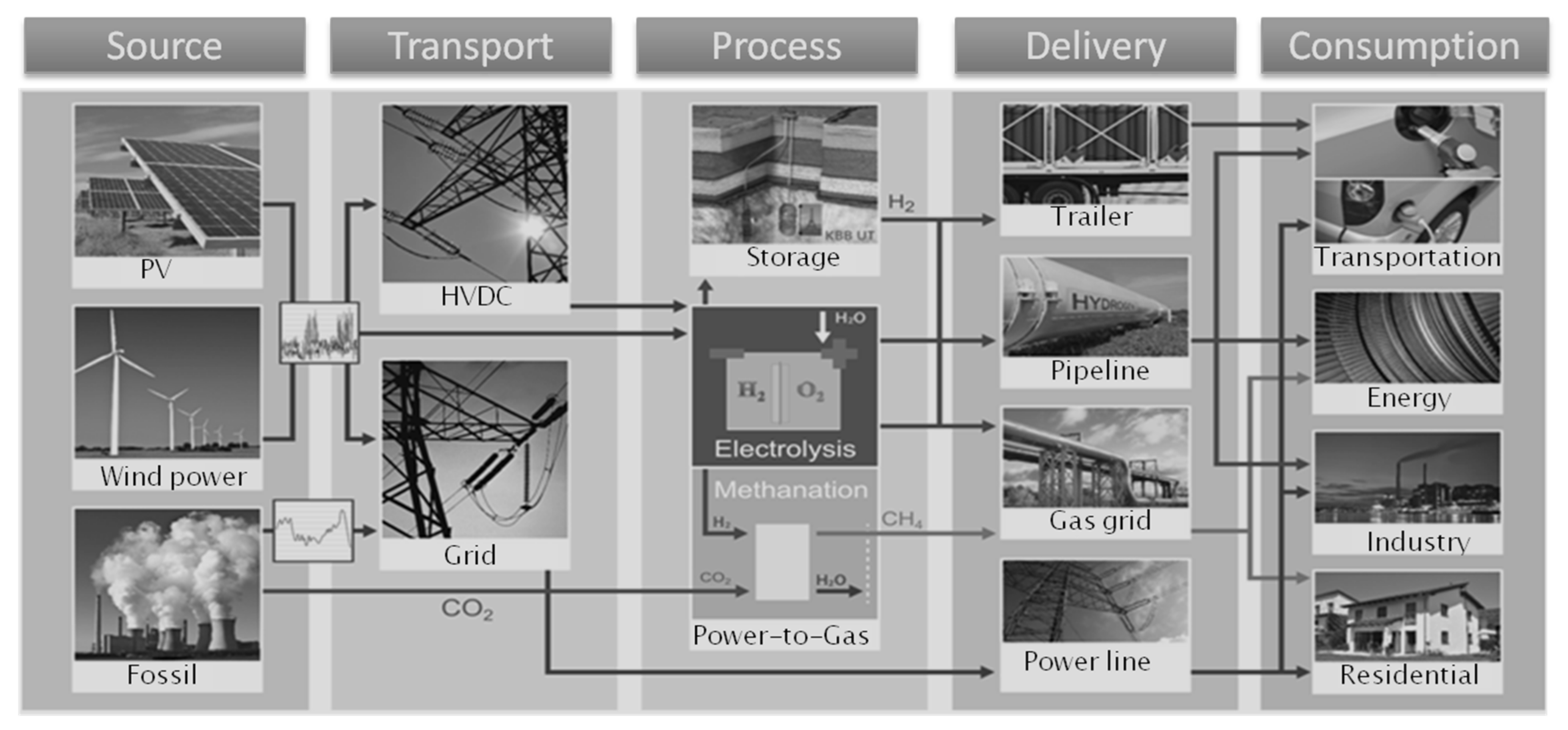
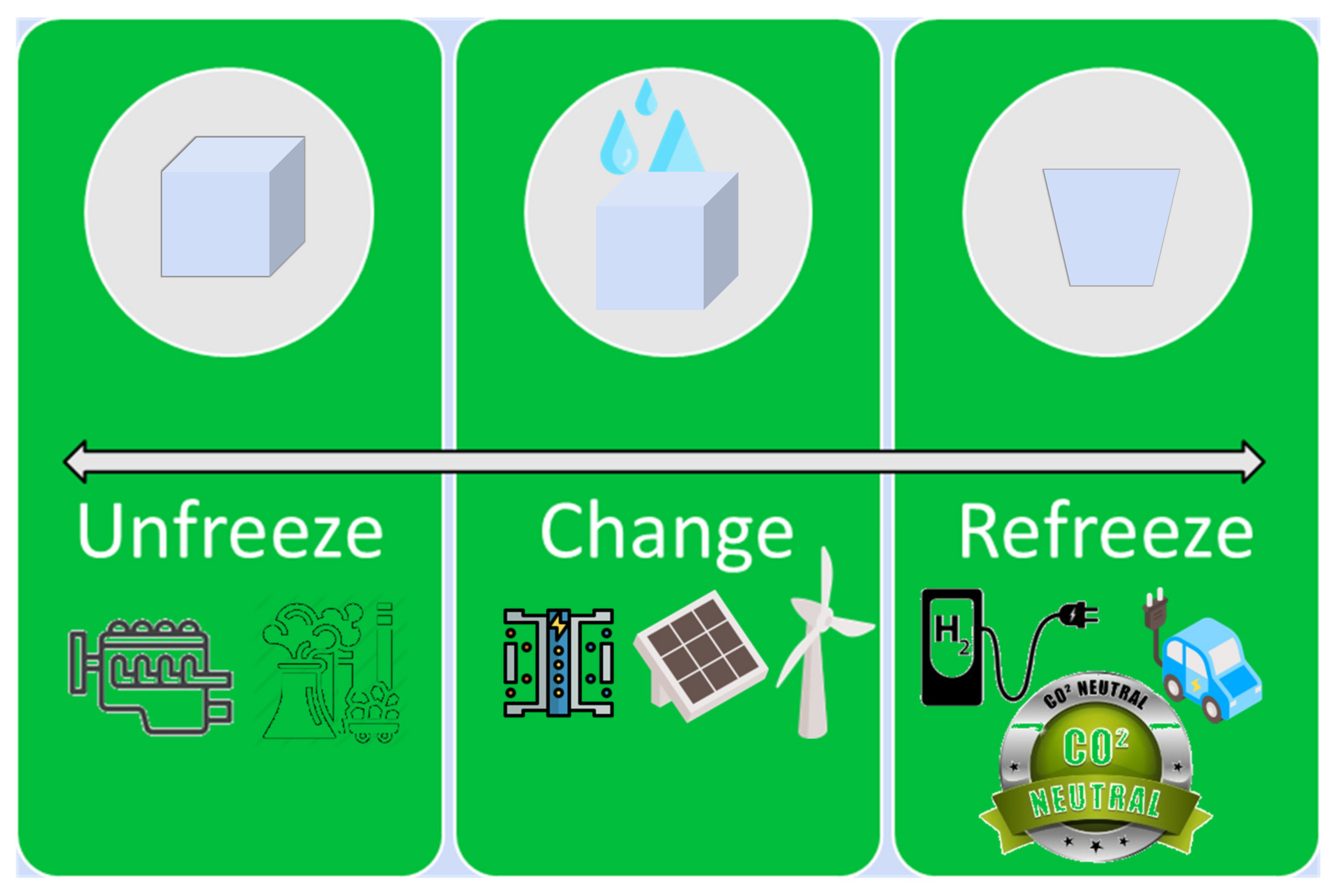
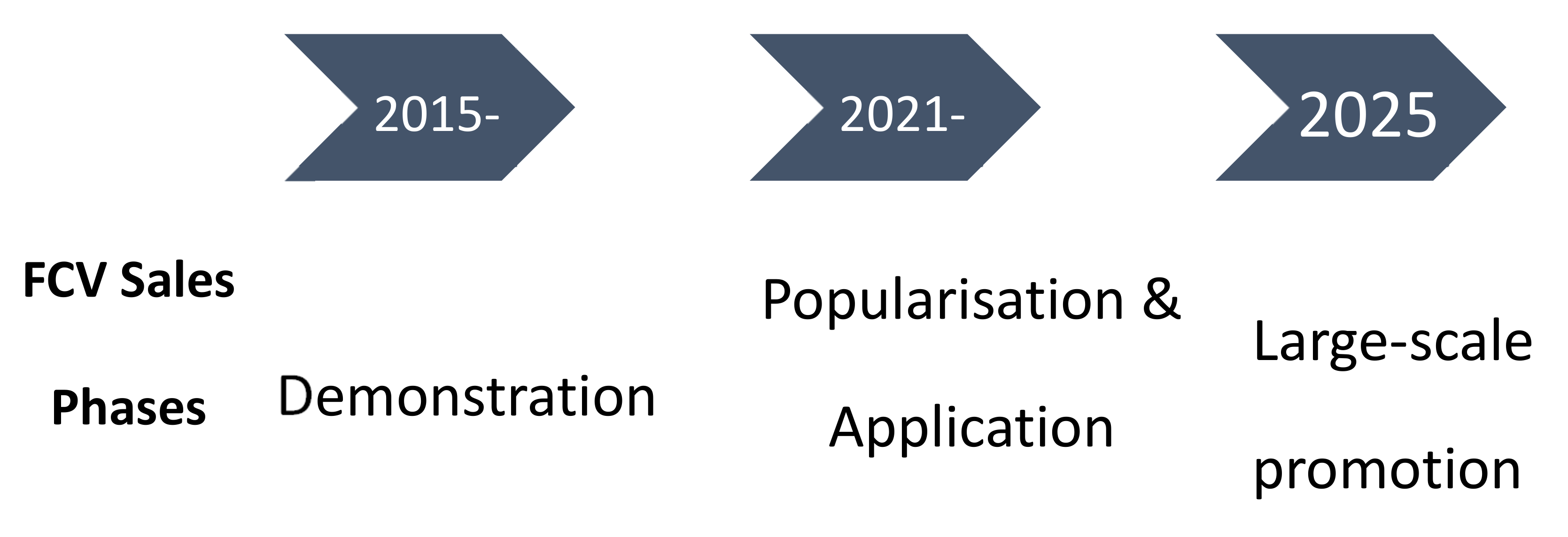
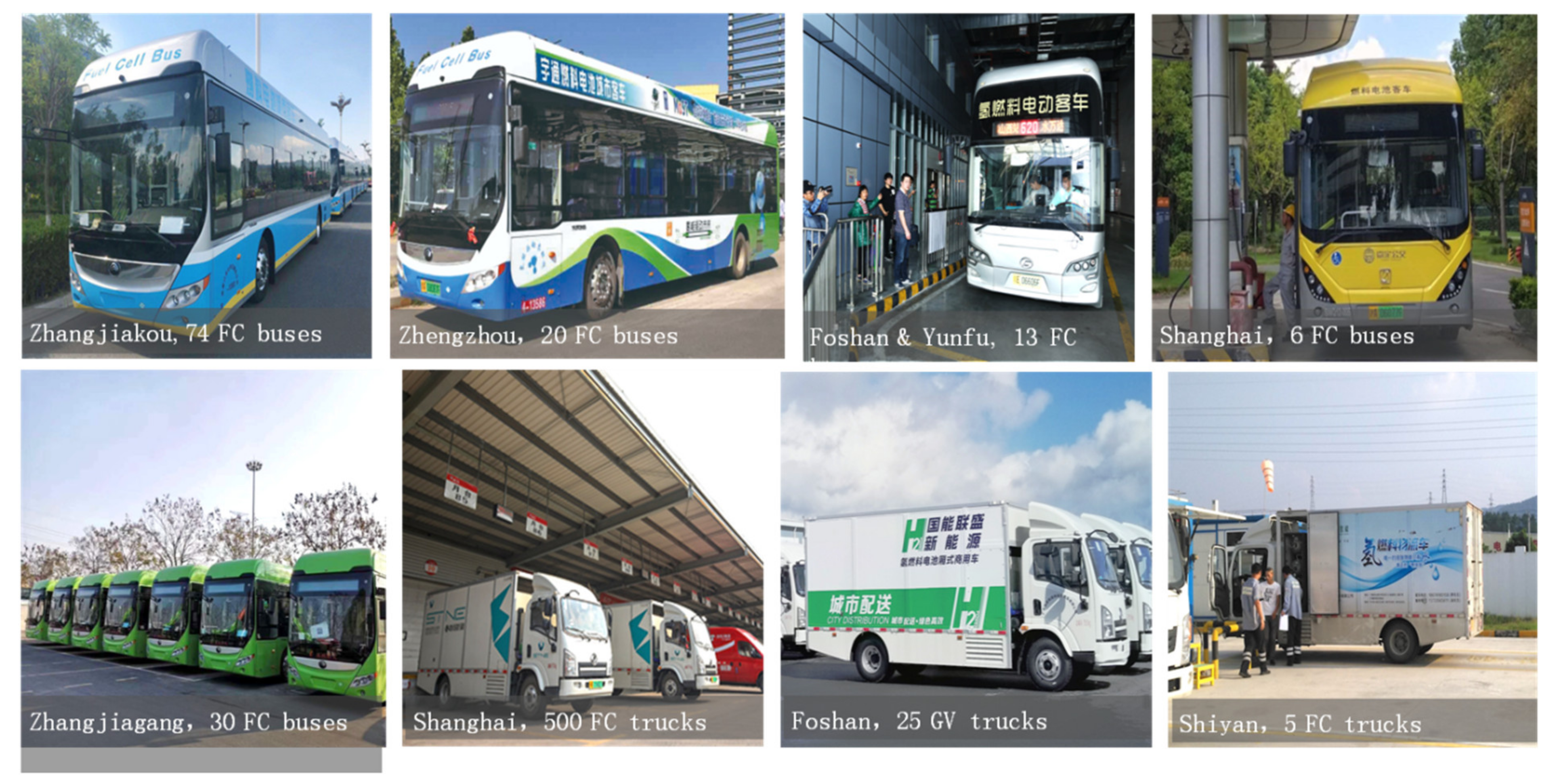
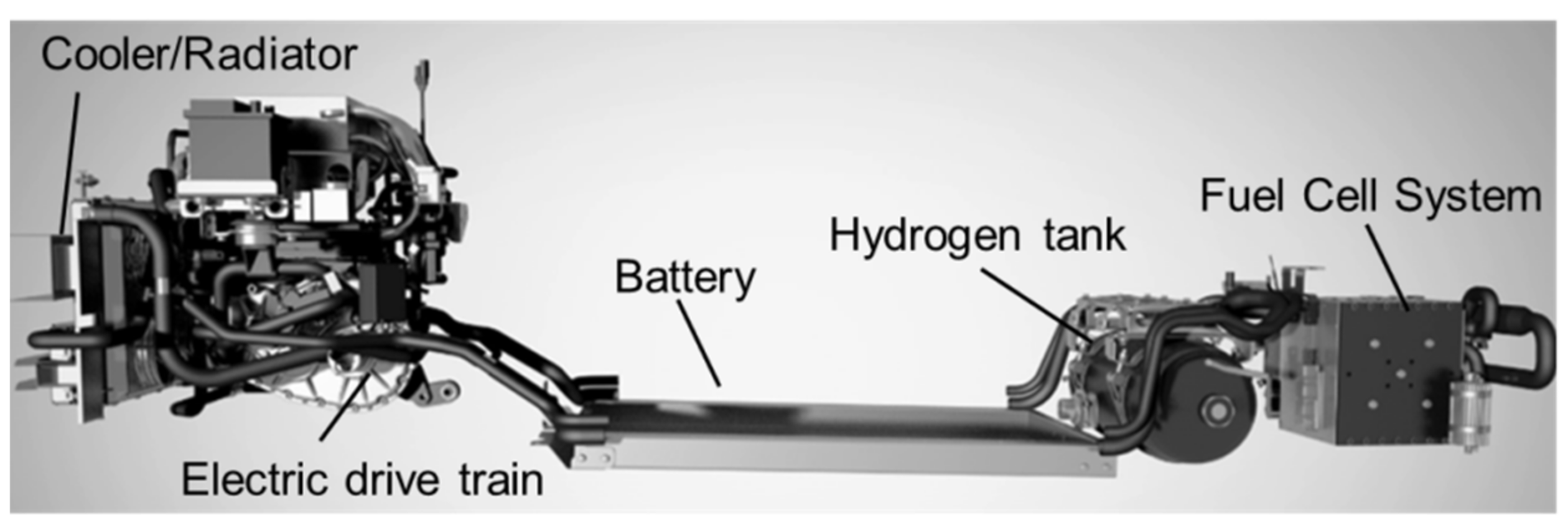
Publisher’s Note: MDPI stays neutral with regard to jurisdictional claims in published maps and institutional affiliations. |
© 2021 by the author. Licensee MDPI, Basel, Switzerland. This article is an open access article distributed under the terms and conditions of the Creative Commons Attribution (CC BY) license (https://creativecommons.org/licenses/by/4.0/).
Share and Cite
Peksen, M. Hydrogen Technology towards the Solution of Environment-Friendly New Energy Vehicles. Energies 2021, 14, 4892. https://doi.org/10.3390/en14164892
Peksen M. Hydrogen Technology towards the Solution of Environment-Friendly New Energy Vehicles. Energies. 2021; 14(16):4892. https://doi.org/10.3390/en14164892
Chicago/Turabian StylePeksen, Murat. 2021. "Hydrogen Technology towards the Solution of Environment-Friendly New Energy Vehicles" Energies 14, no. 16: 4892. https://doi.org/10.3390/en14164892
APA StylePeksen, M. (2021). Hydrogen Technology towards the Solution of Environment-Friendly New Energy Vehicles. Energies, 14(16), 4892. https://doi.org/10.3390/en14164892




